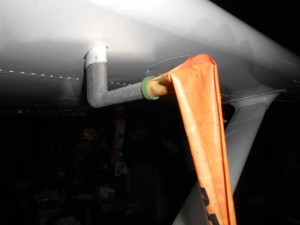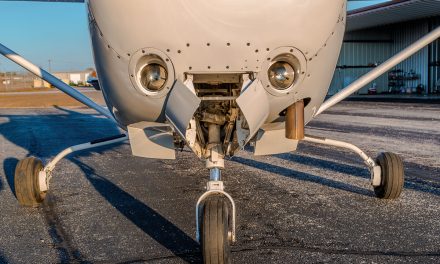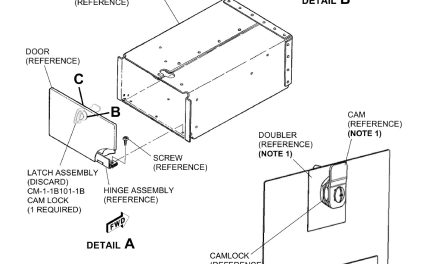 Under the Cowling
Under the Cowling
How to Pinpoint Pitot-Static System Problems
On October 2, 1996, Aeroperu’ Flight 603 departed from Miami with Santiago Chile as its final destination. After the final stop in Lima, Peru, the passengers were transferred to a Boeing 757 that had just come out of a series of maintenance checks. The static ports on the side of the fuselage were covered with tape during the maintenance checks and were forgotten by the employees. The pilots missed it on the preflight because the static ports are so high above ground level.
Shortly after departure, the air data computers began setting off a series of conflicting alarms in the cockpit and erroneous airspeed and altitude readings. The transponders use the information from the air data computers for their altitude information, so ATC also was receiving erroneous altitude information. The flight eventually crashed into the Pacific Ocean killing all 70 people on board. The altimeters and transponders were indicating that the plane was at 9700 feet MSL. The flight occurred at night over open water with no visual references.
Most general aviation pilots will never fly anything as complex as a Boeing 757, but all pilots need accurate airspeed and altitude indications to fly safely, even if they intend to fly in VFR weather only.
The pitot-static system is relatively simple and straightforward. Static ports, pitot tubes and their associated plumbing don’t usually require a lot of maintenance because they have no moving parts, but there are problems that can develop in the systems.
The pitot tube itself can become a haven for bugs to build nests in. Even when the airplane is hangared or the weather turns cold, pitot covers should be installed. If a pitot tube does get clogged, it will have to be removed and the blockage cleared by blowing compressed air from back to front. Any attempt to blow through the tube from the front with it still connected will just move the debris further into the lines or seriously damage the airspeed indicator. Pitot covers should be used even if the airplane is hangared.
Most airplanes have heated pitot tubes, and the heating elements in the tubes occasionally go bad. If the pitot heat is inoperative, a multimeter connected to the wires at the tube will reveal whether the elements are receiving the correct voltage and a good ground. If they are, the tube itself has to be replaced. Note that the pitot heat puts a pretty good load on the electrical system and, when working properly, causes the ammeter to jump up a little when it is turned on.
The installation of the tube should be properly aligned with the airflow so that the correct pressures reach the airspeed indicator. The indicator itself can give erroneous readings. If errors are suspected, the instrument should be sent out to be calibrated.
Occasionally, the plumbing that pipes in pressure from the pitot tube to the airspeed indicator and supplies static air to the airspeed, VSI, and altimeter can be a source of leaks. While many older airplanes used mil-spec low-pressure hose and AN fittings to plumb the system, most newer planes use plastic tubing. It is easy to damage the plastic threads on the fittings if they are over tightened. This plastic tubing also tends to become brittle over time, especially if it is exposed to heat. It is a good idea to be sure these lines are routed away from hot radio stacks if possible.
A leak in the pressure lines going to the airspeed indicator is much more noticeable than a leaking static line. Unless the airplane is pressurized, most static leaks can be undetectable. Often, static leaks are only detected during the static/altimeter system check required by FAR91.411.
The leaks discovered during the static system check can be costly to repair due to the labor involved in tracking down the source of the leak. The tubing and associated fittings can be hard to access. Plus, once the lines age and become a little brittle, fixing one leak can sometimes create another as the line is disturbed. Leaking instruments must be sent out for repair and calibration which can be costly as well.
A mechanic with a suction source can pull a vacuum on the system and check for leaks without having the expensive test equipment required for the static/transponder check that avionics techs use via a suction gun. However, take care not to pull too much of a vacuum on the system as to exceed the limits of the instruments.
To check the system, the static port is sealed (aluminum tape can be used) and the suction gun is teed into the connection at one of the fittings. IMPORTANT: When using Aluminum tape to seal the static port, be sure to use a long piece that extends to the ground so that there is no way it can be forgotten. Once suction is applied, the altimeter and VSI will begin to move. The altimeter is then set on a thousand foot altitude and the suction is held. The altimeter shouldn’t lose more than 100 feet a minute in altitude. The altimeter itself has linkage and gears connected to a sealed bellows shaped aneroid. It can leak internally or simply read incorrectly if the indicating mechanisms get worn or misaligned.
Some airplanes, like this Piper, have a static system drain which should be drained periodically. Note the ram air hole in front and the drain hole at the bottom.
Airplanes that have alternate static air sources should also be checked for proper operation and any leaks. The photo on the left shows a placard for the alternate static air source under the dash. On the right is the alternate static air source (pull on).
Periodic inspections and some occasional maintenance will help to ensure that the airspeed and altitude readings on the gages are accurate. True readings are critical to the safety of a flight—especially at night or in IMC.





